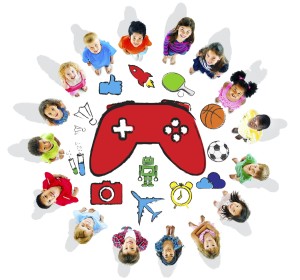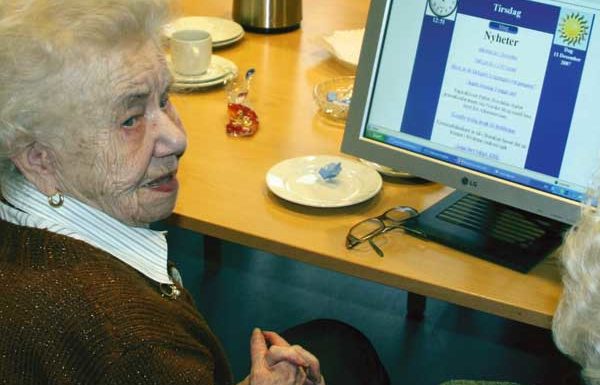Computer games for classroom teaching
Computer games can help improve instruction. Pupils learn more. Teachers get a better overview of what and how well their students are learning.
Professor Alf Inge Wang has Super Mario on his office wall, and spends a lot of time at work trying out different video games.
It might seem like Wang is just goofing off, but an important part of his job is to find inspiration. His goal is for computer games to become a larger part of teaching in schools.
Wang, who works at the Department of Computer and Information Science at NTNU, says that technology in education can motivate students by engaging them and helping them learn more easily.
Emerging technologies, and especially the prevalence of smartphones and social media, provide new opportunities for student instruction. Now it is up to teachers to seize the opportunity.
Wang is hoping to get leading game and pedagogy research groups to team up to create a game-based learning platform. Possible collaborators include NTNU, Gjøvik University College, the Norwegian computer game network JoinGame, and other game researchers. Creative firms that specialize in game-based learning will also be invited.
Computer games have been used in teaching since the 1980s, with widely varying results. Engaging students is key, because they quickly dismiss games that do not measure up. Glitzy graphics can never compensate for repetitive and tedious tasks.
Wang has seen a lot of bad games, but he definitely scored when he hit on the idea for the game Kahoot! , which the web site describes as a game-based classroom response system that lets teachers create and play quizzes, discussions or even surveys (which are called Kahoots) using any device with a web browser.
Smartphones changed everything
Efforts to develop Kahoot! began in 2006, but the public version of the game only became available in 2013.
As a teacher, Wang gave quizzes to students in the classroom long before then.
He held some of the first quiz games by combining a creatively re-designed hand control with some inexpensive buzzers that students could press. But only a few students at a time could participate. His dream was to get the whole classroom involved at once, but he ran into technical and practical limitations.
He also invited friends to similar game sessions.
When smartphones appeared on the scene, Wang and his group already had clearly developed game ideas and were ready and able to adapt them to the new technology.
How Kahoot! works
Teachers can use Kahoot! in several ways. For example, they can easily create a quiz with questions from their lesson. Then they can quickly check students’ mastery level on the topic.
Questions appear on a screen in the classroom. Students answer on their phones.
At the same time, the quiz becomes a competition among the students, with the results displayed instantly on the screen. Many students find it a fun way to learn, and it motivates them to keep up.
The teacher can tell what material the students have or haven’t understood, and from that they can figure out topics that might need to be re-taught or introduced in a different way.
Students can also evaluate the quiz with a grade and possible recommendation, giving the teacher a heads up when something should be done a little differently. Discussions and surveys are other ways to use the program.
At last check Kahoot! had more than 23 million users, with 1 million logged on daily. Pupils do not have to give personal information to log in.
Wang has been instrumental in developing NTNU’s different game initiatives, including games that help students learn to program, research the social aspects of gaming, or compose music and customize it for different media types.
Now NTNU has sold its rights to Kahoot!, and Wang’s role is no longer so central. Skilled people are carrying on Kahoot!’s development, allowing Wang to think up other games and teaching methods.
Master’s students get in the game
The games professor works closely with several master’s students. In one project, they tried to share Trondheim’s history by sending people around town on a real time – not virtual – treasure hunt.
All forms of assistance were allowed. Using mobile phones, participants solved clues that led them from one task to the next. This was combined with GPS data and QR-code scans, which confirmed that the participants, or at least their cell phones, had reached a specified location and were ready for the next task.
In another game, Wang’s students used a similar method to send students around the university area looking for virtual items that could help them. This was a sort of parody on traditional role-playing games, where swords and armor were replaced with Bic pens and all-weather jackets, and where participants could fight each other if they were in the same place. Both games worked.
But so far neither of them has become a hit. A third game took place in the biggest cinema in Trondheim, where dozens of people could play simultaneously on the big screen. There are definitely possibilities here, but Kahoot!’s success has not been replicated yet.
Variety is important
One of the keys to success is to give teachers a platform that can work in several ways. The platform must be a starting point for multiple games that can be easily customized as required.
Aside from their quiz aspect, games might include word definitions, mathematical expressions, or terms sorted by importance, for example. The product also has to be inexpensive.
A platform like this can be used for mathematics, language and science. But in developing countries, hygiene, nutrition and personal finance are areas that would be even more useful. Many developing countries already have a very high density of mobile phones, as well as smartphones. These provide even greater opportunities.
Several different games should be developed to provide more variety, such as ones that can be played at home or in the classroom, with others or alone.
“It’s important to offer games that can be used without being online. This makes it possible to use the technology even in areas with poor infrastructure,” says Wang.
Good content should be rewarded, he said. It must also be easy to translate content between different languages and cultures.
Blogs, Twitter, Facebook and other social media make it easier than ever for teachers to share good ideas quickly with people worldwide. Wang believes that these tools embody great potential to revolutionize education globally.
Vision 2030
Last fall the Norwegian government launched a programme called Vision 2030 to encourage innovative ideas and suggestions on how to meet global health and education challenges. Educational institutions, businesses and experts have been contributing their ideas, and Wang has submitted his proposals to the government on behalf of NTNU.
A conference will be held in Trondheim on 2-3 March to present several of the top suggestions as the culmination of this joint effort. The best proposals will form part of Norway’s contribution to the UN negotiations on the new sustainable development goals.









